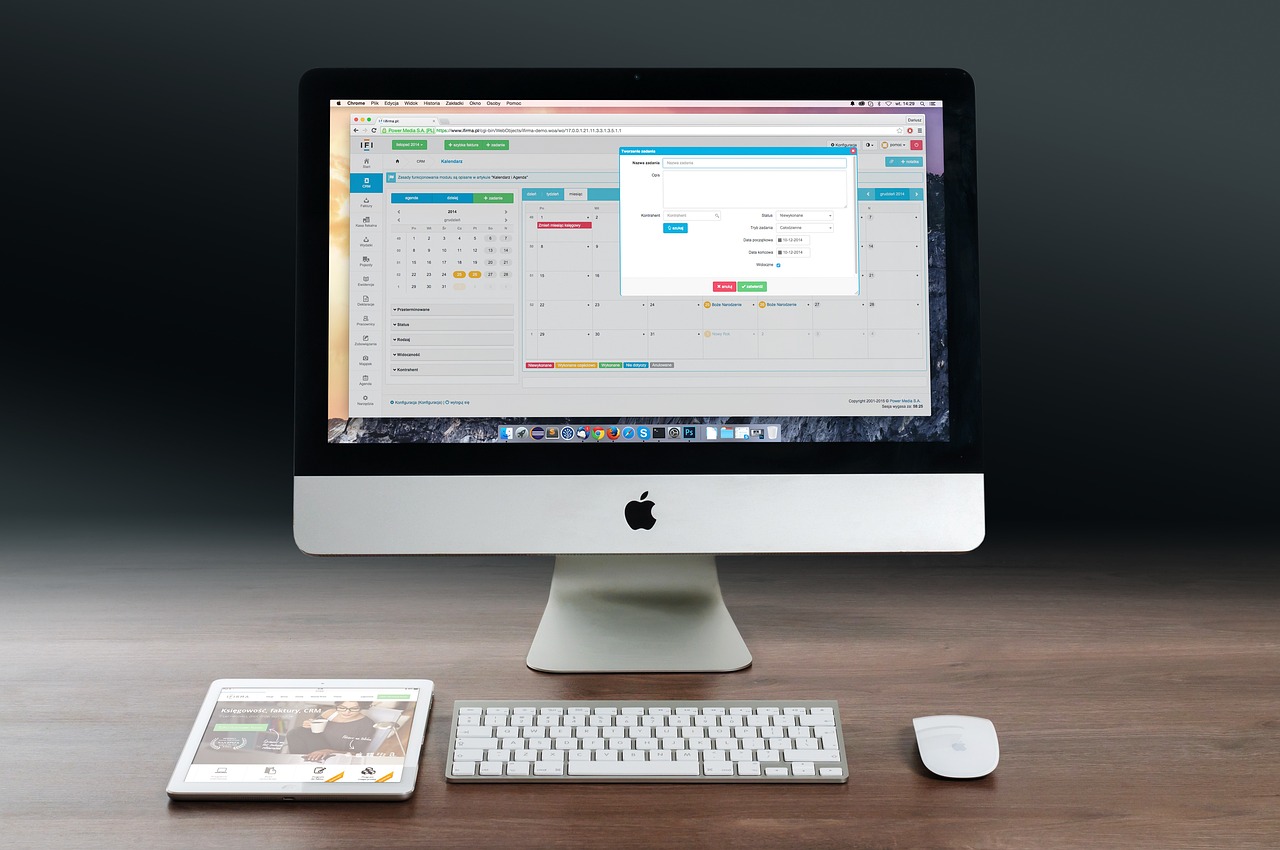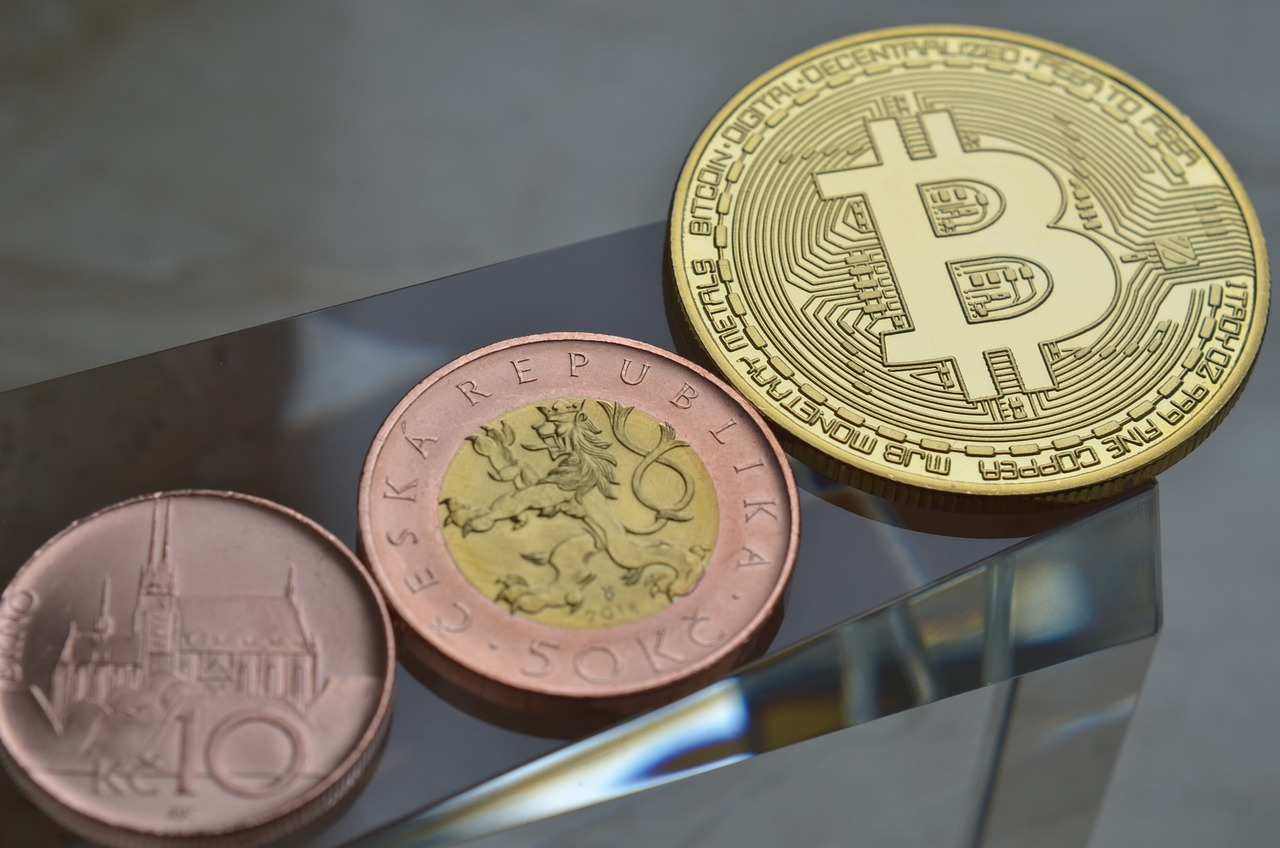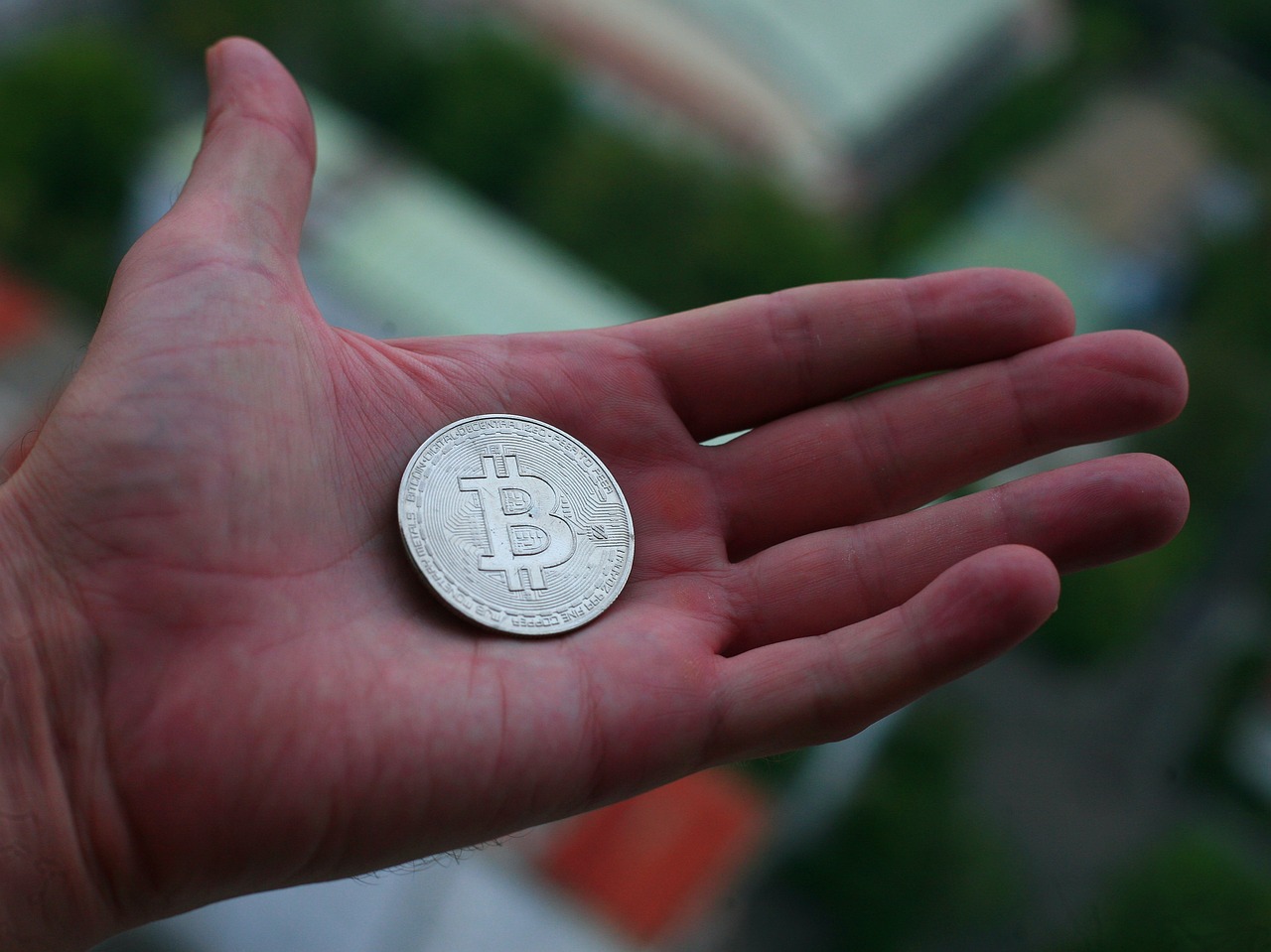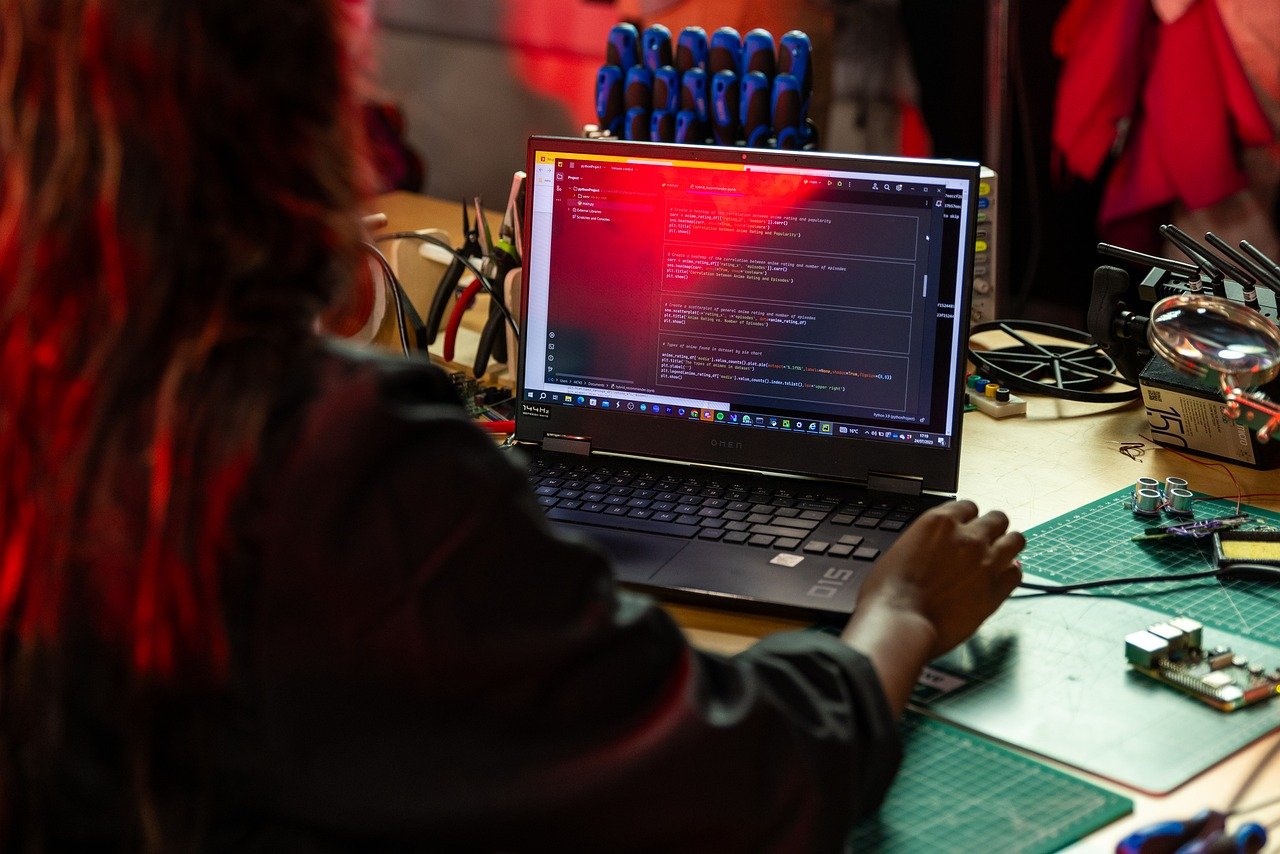How to Use Blockchain for Digital Rights Management
In today's digital world, where content is just a click away, protecting intellectual property has become a daunting challenge. Enter blockchain technology, a revolutionary solution that promises to change the game for digital rights management (DRM). Imagine a world where creators can securely manage their work, ensuring they receive fair compensation while consumers enjoy transparent access to content. Sounds intriguing, right? This article explores how blockchain can be seamlessly integrated into DRM, highlighting its myriad benefits, the challenges it addresses, and practical applications that can safeguard the rights of creators.
Before diving into how blockchain can enhance DRM, it's crucial to understand what blockchain is all about. At its core, blockchain is a decentralized digital ledger that records transactions across multiple computers. This means that no single entity controls the data, making it immutable and transparent. Each transaction is securely encrypted and linked to the previous one, creating a chain that is nearly impossible to alter. These characteristics make blockchain an ideal candidate for addressing the shortcomings of traditional DRM systems, which often suffer from centralized control and lack of transparency.
Digital rights management is fraught with challenges that threaten the livelihoods of creators. Notably, issues such as piracy, copyright infringement, and a general lack of transparency plague the industry. Traditional DRM systems often fall short, relying on outdated methods that can be easily bypassed or manipulated. For instance, consider the rampant piracy that occurs on various platforms. Many creators find it difficult to protect their work, leading to lost revenue and diminished motivation to produce new content. Blockchain offers a beacon of hope, providing a more robust framework for protecting intellectual property.
Copyright infringement and piracy are like weeds in a garden—if left unchecked, they can overrun and destroy the hard work of creators. Blockchain can help to create a more secure framework for protecting intellectual property. By using blockchain, every piece of content can be timestamped and recorded, creating an unalterable proof of ownership. This not only deters unauthorized use but also simplifies the process of tracking down infringers. Imagine a world where artists can easily prove their ownership and receive compensation directly from consumers without the need for intermediaries. It's not just a dream; it's becoming a reality.
The legal landscape surrounding digital rights management is complex and often confusing. However, blockchain technology has the potential to enhance the protection for creators while ensuring compliance with existing regulations. By integrating blockchain into the legal framework, creators can have greater control over their rights, enabling them to set specific terms for how their work is used and distributed. This not only empowers creators but also fosters a culture of respect for intellectual property.
Building consumer trust is paramount for any successful DRM system. Blockchain's transparent nature can help bridge the gap between creators and consumers, fostering a sense of trust and ethical consumption. When consumers know that their purchases directly support the creators, they are more likely to engage with the content responsibly. This transparency can lead to a more sustainable ecosystem where both creators and consumers thrive.
Smart contracts are like digital vending machines for agreements—once the conditions are met, the transaction occurs automatically. In the realm of DRM, smart contracts can automate licensing agreements and royalty payments, streamlining the entire process. Imagine an artist releasing a new song; with a smart contract in place, every time the song is streamed, a predetermined amount is automatically transferred to the artist's wallet. No more waiting for monthly payouts or navigating complex payment structures—just seamless transactions that benefit everyone involved.
Real-world examples of blockchain applications in DRM showcase its potential to revolutionize the industry. For instance, several platforms are emerging that utilize blockchain to protect intellectual property rights effectively. These case studies provide a glimpse into how blockchain can be practically applied to ensure creators are fairly compensated for their work.
The music industry is at the forefront of blockchain innovations for DRM. Platforms like Myco and Ujo Music are leveraging blockchain to ensure fair compensation for artists and streamline royalty distribution. By directly connecting artists with their audience, these platforms eliminate the need for intermediaries, allowing creators to retain a more significant share of their earnings. This shift not only empowers artists but also enhances the overall music experience for fans.
In the publishing world, blockchain technology is transforming how authors and creators manage their rights. Platforms like Po.et and Everipedia allow writers to publish and protect their work directly through blockchain systems. This direct approach not only safeguards their intellectual property but also enables them to receive royalties instantly without the traditional delays associated with publishing houses.
As technology continues to evolve, so do the possibilities for blockchain in digital rights management. Emerging trends such as decentralized content distribution and enhanced consumer engagement are shaping the future of DRM. With the potential for more sophisticated smart contracts and improved user interfaces, the way we think about content ownership and rights management is undergoing a significant transformation.
- What is blockchain technology? Blockchain is a decentralized digital ledger that securely records transactions across multiple computers, ensuring transparency and immutability.
- How does blockchain help with copyright infringement? By providing a secure and transparent way to prove ownership and track usage, blockchain can significantly reduce instances of copyright infringement.
- What are smart contracts? Smart contracts are self-executing contracts with the terms of the agreement directly written into code, allowing for automated transactions.
- Can blockchain improve consumer trust? Yes, blockchain's transparency fosters trust between creators and consumers, ensuring ethical consumption of digital content.

The Basics of Blockchain Technology
Understanding blockchain technology is essential for grasping its application in digital rights management (DRM). At its core, blockchain is a decentralized digital ledger that records transactions across many computers in such a way that the registered transactions cannot be altered retroactively, ensuring the integrity of the data. This decentralization is a game changer; it means no single entity has control over the entire chain, reducing the risk of fraud and manipulation. Imagine a library where every book is cataloged by multiple librarians, and each librarian has their own copy of the catalog—if one tries to change a book's details, it won't match the others, making it easy to spot the discrepancy.
Another key concept is immutability. Once data is entered into a blockchain, it becomes nearly impossible to change. This is akin to carving your name into stone; it’s permanent and can be seen by anyone. This characteristic is crucial for DRM, as it ensures that once a digital asset's rights are recorded, they remain unchanged and verifiable. This builds a robust framework for protecting intellectual property, as creators can have confidence that their rights are secure.
Transparency is also a significant aspect of blockchain technology. Every transaction is recorded on a public ledger, which means that anyone can verify the authenticity of the data. Think of it like a public park where everyone can see who enters and exits; this visibility fosters accountability. In the context of DRM, this transparency can help resolve disputes over ownership and usage rights, as all parties can access the same information and verify claims.
To summarize, the fundamental characteristics of blockchain technology—decentralization, immutability, and transparency—make it an ideal candidate for addressing the challenges faced in digital rights management. By leveraging these features, creators can protect their work more effectively, ensuring that they receive fair compensation and that their intellectual property remains secure in an increasingly digital world.

Current Challenges in Digital Rights Management
Digital Rights Management (DRM) is a crucial component in protecting intellectual property in our increasingly digital world. However, it faces numerous challenges that complicate its effectiveness. One of the primary issues is piracy. With the rise of the internet, unauthorized copying and distribution of digital content have become alarmingly easy. This not only undermines the financial stability of creators but also raises ethical questions about the value of their work.
Another significant challenge is copyright infringement. Many individuals and entities are unaware of copyright laws or choose to ignore them altogether, leading to rampant misuse of protected content. Traditional DRM systems often struggle to keep up with these violations, as they rely heavily on centralized control, which can be circumvented by savvy users.
Moreover, the lack of transparency in current DRM practices creates a barrier between creators and consumers. Many users find it difficult to understand their rights and the limitations imposed on them by DRM technologies. This ambiguity can lead to frustration and distrust, ultimately affecting the relationship between creators and their audience.
To illustrate these challenges, consider the following table that summarizes the key issues facing DRM today:
| Challenge | Description |
|---|---|
| Piracy | Unauthorized copying and distribution of digital content. |
| Copyright Infringement | Misuse of protected content due to ignorance or disregard for copyright laws. |
| Lack of Transparency | Confusion among consumers regarding their rights and the limitations of DRM. |
These challenges highlight the limitations of traditional DRM systems, which often rely on centralized servers and complex licensing agreements. The reliance on a single point of control not only makes these systems vulnerable to hacking and exploitation but also creates a disconnect between creators and their audience. In a world where content is easily shared and accessed, the need for a more robust and transparent solution is clearer than ever.
As we explore the potential of blockchain technology in addressing these issues, it becomes evident that a decentralized approach could offer significant advantages. By leveraging the strengths of blockchain, we can create a more secure and transparent framework for digital rights management, ultimately benefiting both creators and consumers alike.
- What is DRM? Digital Rights Management (DRM) refers to technologies that control the use of digital content and devices after the initial sale.
- How does piracy affect creators? Piracy leads to significant financial losses for creators, as it undermines their ability to earn revenue from their work.
- Can blockchain improve DRM? Yes, blockchain offers a decentralized and transparent solution that can enhance the security and efficiency of DRM systems.

Copyright Infringement and Piracy
In today's digital landscape, copyright infringement and piracy have become rampant issues that threaten the livelihoods of creators across various industries. With a few clicks, anyone can access, share, and distribute content without the creator's permission, leading to significant financial losses and a devaluation of intellectual property. Imagine pouring your heart and soul into a piece of art, only to see it pirated and circulated without your consent. Frustrating, right? This is the reality many artists face in an age dominated by digital content.
Traditional methods of protecting intellectual property often fall short in combating these challenges. Conventional Digital Rights Management (DRM) systems can be cumbersome, overly restrictive, and sometimes ineffective. They rely on centralized control, which can be easily bypassed by savvy tech users. In contrast, blockchain technology offers a revolutionary approach to addressing these issues. By leveraging the principles of decentralization, immutability, and transparency, blockchain can provide a more secure and efficient framework for protecting digital content.
Here's how blockchain can tackle the problems of copyright infringement and piracy:
- Decentralization: Unlike traditional DRM systems that rely on a single point of control, blockchain operates on a decentralized network. This means that no single entity has complete power over the content, making it significantly harder for pirates to manipulate or steal it.
- Immutability: Once information is recorded on a blockchain, it cannot be altered or deleted. This feature ensures that ownership records and licensing agreements are secure and verifiable, providing creators with undeniable proof of their rights.
- Transparency: Blockchain's transparent nature allows all parties involved to view the ownership and transaction history of digital content. This visibility fosters accountability and trust, as creators can easily track how their work is being used and shared.
Furthermore, the integration of smart contracts within blockchain technology adds another layer of protection. These self-executing contracts can automatically enforce licensing agreements and royalty payments, ensuring that creators receive fair compensation for their work. For instance, when a piece of music is streamed, a smart contract can instantly distribute royalties to the artist, producers, and any other stakeholders involved, eliminating the need for intermediaries and reducing the risk of payment delays.
While blockchain presents a promising solution to combat copyright infringement and piracy, it is essential to recognize that it is not a silver bullet. The technology is still evolving, and challenges remain in terms of legal frameworks, user adoption, and technological integration. However, the potential benefits for creators are immense. By harnessing the power of blockchain, we can create a more equitable digital landscape where artists are respected, compensated fairly, and empowered to thrive in their creative pursuits.
- What is copyright infringement? Copyright infringement occurs when someone uses a copyrighted work without permission from the copyright owner.
- How does blockchain help with copyright protection? Blockchain provides a decentralized, immutable, and transparent way to secure ownership records and enforce licensing agreements.
- What are smart contracts? Smart contracts are self-executing contracts with the terms of the agreement directly written into code, allowing for automated transactions and enforcement.
- Can blockchain eliminate piracy completely? While blockchain offers significant advantages, it is not a complete solution. Ongoing efforts in legal frameworks and user education are also necessary.

Legal Framework for DRM
Understanding the legal framework surrounding Digital Rights Management (DRM) is crucial for both creators and consumers in the digital landscape. The laws governing copyright and intellectual property are complex and vary significantly from one jurisdiction to another. Blockchain technology offers a unique opportunity to enhance and streamline these legal frameworks, providing a more robust solution for protecting creators' rights while ensuring compliance with existing regulations.
At its core, blockchain can help address some of the inefficiencies and ambiguities found in traditional DRM systems. For instance, the decentralized nature of blockchain allows for the creation of immutable records of ownership and usage rights, which can be particularly useful in proving copyright ownership. This is essential in a world where digital content can be easily replicated and distributed without proper authorization. By establishing a clear and transparent ledger of rights, blockchain can help reduce disputes and enhance legal clarity.
Moreover, the integration of smart contracts within blockchain systems can automate many aspects of the legal framework. These self-executing contracts can be programmed to execute specific actions when predetermined conditions are met, such as automatically distributing royalties to creators when their works are used. This not only simplifies the licensing process but also ensures that creators receive fair compensation without the need for intermediaries.
However, the intersection of blockchain and existing legal frameworks is not without its challenges. For example, while blockchain can provide a high level of transparency, it also raises questions about data privacy and the protection of personal information. Additionally, the legal status of smart contracts remains a gray area in many jurisdictions, with ongoing discussions about their enforceability and the extent to which they can replace traditional legal agreements.
In summary, while the legal framework for DRM is complex, the integration of blockchain technology offers promising solutions. It enhances the protection of intellectual property rights, facilitates compliance with regulations, and promotes fair compensation for creators. As the technology evolves, it will be essential for lawmakers and industry stakeholders to collaborate in developing a legal landscape that embraces these innovations while safeguarding the rights of all parties involved.
- What is Digital Rights Management (DRM)?
DRM refers to technologies and strategies used to protect the rights of creators and control how their digital content is used and distributed.
- How does blockchain improve DRM?
Blockchain enhances DRM by providing a transparent and immutable record of ownership, automating contracts, and ensuring fair compensation for creators.
- What are smart contracts?
Smart contracts are self-executing contracts with the terms of the agreement directly written into code, enabling automatic execution when conditions are met.
- Are there legal challenges with blockchain and DRM?
Yes, there are challenges related to data privacy, the enforceability of smart contracts, and the need for legal clarity in a rapidly evolving digital landscape.

Consumer Trust and Transparency
In today's digital marketplace, consumer trust is more important than ever. With the rise of online piracy and copyright infringement, consumers often feel skeptical about the authenticity of digital content. This skepticism can lead to a reluctance to pay for digital products, ultimately hurting creators and the industry as a whole. Blockchain technology offers a solution that can bridge this trust gap. By providing a transparent and immutable record of ownership and transactions, blockchain allows consumers to verify the legitimacy of digital content effortlessly.
Imagine walking into a store and being able to trace the entire history of a product—from its origin to the moment it reached the shelves. That’s what blockchain can do for digital content. Each transaction is recorded on the blockchain, creating a permanent, tamper-proof history that consumers can access. This level of transparency not only enhances trust but also empowers consumers to make informed decisions about their purchases. They can see who created the content, how it has been used, and whether the creators are receiving fair compensation.
Furthermore, the decentralized nature of blockchain means that no single entity controls the data. This is crucial in an era where consumers are increasingly concerned about privacy and data security. With traditional DRM systems, users often have to rely on corporations to manage their rights and protect their data. However, with blockchain, the power shifts back to the creators and consumers. They can engage directly with one another, fostering a community built on trust and transparency.
To illustrate this point, consider the following table that highlights the key benefits of blockchain in building consumer trust:
| Benefit | Description |
|---|---|
| Transparency | All transactions are recorded on a public ledger, allowing consumers to verify the authenticity of digital content. |
| Immutability | Once a transaction is recorded, it cannot be altered, ensuring that the history of ownership is preserved. |
| Decentralization | No single entity controls the data, reducing the risk of manipulation and increasing consumer confidence. |
| Direct Engagement | Consumers can interact directly with creators, eliminating intermediaries and fostering a sense of community. |
As we move forward, it’s essential to recognize that trust is a two-way street. While blockchain provides the tools to enhance transparency, it's up to creators to engage with their audience authentically. By embracing these technologies, artists and content creators can not only protect their rights but also cultivate a loyal customer base that values ethical consumption.
In conclusion, the integration of blockchain in digital rights management is not just about protecting intellectual property; it's about creating a more trustworthy and transparent ecosystem for everyone involved. As consumers become more aware of their rights and the technologies available to them, they will likely demand greater transparency from creators and platforms alike. Blockchain could very well be the key to unlocking this new era of trust in the digital age.
- What is blockchain technology? Blockchain is a decentralized digital ledger that records transactions across multiple computers, ensuring that the recorded data cannot be altered retroactively.
- How does blockchain enhance consumer trust? By providing a transparent and tamper-proof record of ownership and transactions, consumers can verify the legitimacy of digital content, fostering trust.
- Can blockchain completely eliminate piracy? While blockchain can significantly reduce piracy by securing ownership and usage rights, it may not completely eliminate the issue. However, it provides a more robust framework for protecting intellectual property.
- What role do smart contracts play in DRM? Smart contracts automate the execution of agreements, such as licensing and royalty payments, ensuring that creators are compensated fairly and efficiently.

Integration of Smart Contracts
Smart contracts are revolutionizing the way digital rights management (DRM) operates by providing an automated, secure, and transparent way to handle agreements between creators and consumers. Imagine a world where artists can publish their work without worrying about the complexities of licensing and royalty distribution. With smart contracts, this vision is becoming a reality. These self-executing contracts are coded onto the blockchain, meaning they automatically enforce the terms agreed upon without the need for intermediaries. This not only speeds up transactions but also reduces the chances of disputes arising from misinterpretations or errors.
One of the most significant advantages of integrating smart contracts into DRM is their ability to facilitate licensing agreements. When a creator uploads their content to a platform that utilizes blockchain technology, they can set specific conditions for how their work can be used. For instance, they might specify that a song can be streamed for free but requires a fee for downloads. The smart contract will automatically execute these terms, ensuring that the creator receives payment directly and instantly whenever a transaction occurs. This eliminates the lengthy processes often associated with traditional DRM systems, where payments can take weeks or even months to reach the creator.
Moreover, smart contracts can also streamline royalty payments, ensuring that all parties involved are compensated fairly and promptly. In traditional systems, royalties often get tangled in bureaucratic red tape, leading to delays and discrepancies. However, with smart contracts, the payment structure can be clearly defined and automatically executed based on predefined conditions. For example, if a song is played on a streaming service, the smart contract can automatically distribute the agreed-upon royalties to the artist, producers, and any other stakeholders in real time. This level of transparency not only builds trust among creators but also enhances the overall efficiency of the entire ecosystem.
To better understand how smart contracts function within DRM, consider the following table that illustrates their key features and benefits:
| Feature | Benefit |
|---|---|
| Automation | Reduces the need for intermediaries, speeding up processes. |
| Transparency | All transactions are recorded on the blockchain, ensuring accountability. |
| Security | Immutable contracts protect against tampering and fraud. |
| Real-Time Payments | Creators receive payments instantly, improving cash flow. |
In conclusion, the integration of smart contracts into digital rights management is not just a trend; it's a transformative change that empowers creators and enhances the integrity of the digital marketplace. As more platforms adopt this technology, we can expect to see a significant shift in how intellectual property is protected and monetized. This shift will ultimately lead to a more equitable system for all stakeholders involved in the creative process.
- What are smart contracts? Smart contracts are self-executing contracts with the terms of the agreement directly written into code, enabling automatic execution when conditions are met.
- How do smart contracts improve DRM? They automate licensing agreements and royalty payments, ensuring transparency and reducing delays in transactions.
- Are smart contracts secure? Yes, they are stored on the blockchain, making them immutable and resistant to tampering or fraud.
- Can anyone use smart contracts for DRM? Yes, any creator can utilize platforms that support blockchain technology to implement smart contracts for their work.

Case Studies of Blockchain in DRM
When it comes to understanding how blockchain can revolutionize digital rights management (DRM), looking at real-world examples is crucial. These case studies not only illustrate the practical applications of blockchain technology but also highlight its potential to solve existing challenges in DRM. One of the most compelling examples can be found in the music industry, where platforms like Myco and Ujo Music are leading the charge. These platforms utilize blockchain to ensure that artists receive fair compensation for their work, effectively cutting out the middlemen and streamlining royalty distribution.
Myco, for instance, allows musicians to upload their tracks directly to the platform, where they can set their own pricing and licensing terms. This direct-to-consumer model not only empowers artists but also provides transparency regarding how much they earn from each stream or download. By leveraging blockchain's immutable ledger, both artists and consumers can track transactions in real-time, which significantly reduces disputes over earnings.
In addition to the music sector, the publishing industry is also experiencing a transformation thanks to blockchain technology. Platforms such as Publiq are enabling authors and content creators to publish their works while retaining full control over their intellectual property rights. This is particularly important in an age where self-publishing has gained traction, yet many authors still struggle with protecting their work from unauthorized use. With blockchain, every piece of content is timestamped and stored in a decentralized manner, making it nearly impossible for anyone to claim ownership without consent.
Moreover, the use of smart contracts within these platforms automates many of the traditional processes that can be cumbersome and prone to error. For example, when a consumer purchases a book or a song, a smart contract can automatically execute the payment to the creator and ensure that any agreed-upon royalties are distributed accordingly. This not only enhances efficiency but also builds trust among all parties involved.
To further illustrate the impact of blockchain in DRM, here's a quick comparison of traditional DRM methods versus blockchain-based solutions:
| Aspect | Traditional DRM | Blockchain-Based DRM |
|---|---|---|
| Transparency | Opaque; often unclear how royalties are calculated | High; all transactions are recorded on a public ledger |
| Control | Limited; third parties often manage rights | Full; creators maintain control over their work |
| Cost | High; involves multiple intermediaries | Low; reduces the need for middlemen |
| Security | Vulnerable to piracy and unauthorized access | Highly secure; difficult to tamper with records |
As we can see, blockchain technology offers a more robust framework for digital rights management. The advantages of transparency, control, cost-effectiveness, and security make it an attractive alternative to traditional DRM systems. With these case studies, it's clear that the future of digital rights management is not just promising—it's already unfolding in front of our eyes.
- What is blockchain technology? Blockchain is a decentralized digital ledger that records transactions across many computers, ensuring that the recorded information cannot be altered retroactively.
- How does blockchain improve DRM? Blockchain enhances DRM by providing transparency, security, and control to creators, allowing them to manage their intellectual property rights more effectively.
- Are there any downsides to using blockchain for DRM? While blockchain offers many benefits, challenges such as scalability, energy consumption, and regulatory compliance still need to be addressed.
- Can blockchain eliminate piracy completely? While blockchain can significantly reduce piracy, it may not eliminate it entirely. However, it creates a more secure environment for content protection.

Music Industry Innovations
The music industry is undergoing a remarkable transformation, largely driven by the integration of blockchain technology. Imagine a world where artists can directly connect with their fans, bypassing traditional intermediaries and ensuring they receive fair compensation for their work. This is not just a dream; it’s becoming a reality thanks to innovative platforms leveraging blockchain for digital rights management (DRM).
One of the most significant advancements is the emergence of platforms like Myco and Ujo Music, which utilize blockchain to facilitate transparent and efficient royalty distribution. These platforms allow artists to upload their music and set their own licensing agreements, ensuring that every time their song is played, they’re compensated fairly. This is a game-changer in an industry where royalty payments have historically been opaque and often unfair.
Moreover, blockchain technology enables the creation of smart contracts, which automate the process of royalty payments. Artists can specify the terms of use for their music, and once those terms are met, the smart contract executes automatically. This not only reduces administrative overhead but also minimizes disputes over payments. For instance, if a song is streamed on a platform, the smart contract can instantly distribute the agreed-upon royalties to the artist, producers, and other stakeholders without the need for manual intervention.
Additionally, blockchain provides a way to combat piracy and copyright infringement, two significant challenges in the music industry. By registering their work on a blockchain, artists can create a permanent, unalterable record of ownership. This means that if someone tries to use their music without permission, the artist has clear, verifiable proof of ownership that can be presented in a legal context. In this way, blockchain acts as a digital fingerprint, helping to protect the intellectual property of creators.
Another fascinating aspect of blockchain in the music industry is its potential for fan engagement. Artists can offer exclusive content to their fans through blockchain-based platforms, such as limited edition releases or backstage access, creating a more intimate and rewarding experience. This not only enhances the connection between artists and their audience but also opens up new revenue streams. Imagine buying a unique digital collectible of your favorite artist's work that is guaranteed to be one-of-a-kind due to its blockchain verification!
As we look to the future, the integration of blockchain in the music industry seems poised to redefine how we think about music ownership and distribution. The potential for increased transparency, fair compensation, and enhanced fan engagement could lead to a more sustainable and equitable music ecosystem. However, it is essential to remain vigilant about the challenges that come with new technologies, ensuring that they are implemented in ways that truly benefit artists and their audiences.
- How does blockchain help artists get paid? Blockchain allows for direct transactions between artists and consumers, ensuring that artists receive a larger share of the revenue generated from their music.
- Can blockchain prevent music piracy? Yes, by creating a permanent record of ownership on the blockchain, artists can prove their rights to their work and take legal action against unauthorized use.
- What are smart contracts in the music industry? Smart contracts are self-executing contracts with the terms of the agreement directly written into code, automating royalty payments and licensing agreements.
- Are there any risks associated with using blockchain for music? While blockchain offers many benefits, there are risks such as technological complexity and the need for widespread adoption to ensure effectiveness.

Publishing and Content Creation
The publishing industry is undergoing a seismic shift, and blockchain technology is at the forefront of this transformation. Imagine a world where authors and creators can publish their work without the shackles of traditional publishing houses, ensuring they retain full control over their intellectual property. With blockchain, this dream is becoming a reality. The decentralized nature of blockchain allows creators to establish direct relationships with their audience, eliminating the need for intermediaries who often take a hefty cut of the profits.
One of the most compelling features of blockchain in publishing is its ability to provide a transparent record of ownership and usage rights. This transparency is crucial in an industry plagued by copyright infringement and piracy. By leveraging blockchain, authors can register their works in a secure and immutable ledger, making it easy to prove ownership and track the usage of their content. This not only empowers creators but also ensures that they receive fair compensation for their work.
Platforms like Steemit and Publiq are pioneering the use of blockchain for publishing, allowing writers to publish their content directly to the blockchain. Here’s how it typically works:
- Registration: Authors register their work on the blockchain, creating a permanent record that verifies their ownership.
- Direct Monetization: Readers can purchase or tip authors directly using cryptocurrency, ensuring that creators receive a larger share of the profits.
- Smart Contracts: These contracts automate royalty payments and licensing agreements, ensuring that authors are compensated fairly and promptly.
Furthermore, blockchain technology opens up new avenues for content creation through decentralized platforms. These platforms enable collaboration between writers, artists, and readers, fostering a sense of community that was often missing in traditional publishing. Imagine a scenario where a group of authors can collaborate on a project, each contributing their unique skills and talents, all while ensuring that they are compensated fairly through automated royalty distributions.
In addition to empowering individual creators, blockchain also enhances the overall integrity of the publishing industry. With a transparent record of all transactions and ownership, it becomes significantly more difficult for piracy and copyright infringement to thrive. This benefits not only the creators but also the readers, who can trust that they are supporting original content rather than pirated works.
As we look to the future, the potential for blockchain in publishing and content creation is immense. It promises to revolutionize how we think about authorship, ownership, and compensation. However, challenges remain, such as the need for widespread adoption and understanding of this technology among creators and consumers alike. The path forward may not be entirely smooth, but the benefits of blockchain in protecting and empowering authors are undeniable.
- What is blockchain technology? Blockchain is a decentralized digital ledger that records transactions across many computers in a way that the registered transactions cannot be altered retroactively.
- How does blockchain protect intellectual property? By registering works on a blockchain, creators can establish proof of ownership and track the usage of their content, making it easier to combat piracy and copyright infringement.
- What are smart contracts? Smart contracts are self-executing contracts with the terms of the agreement directly written into code, allowing for automated transactions and royalty payments.
- Are there any drawbacks to using blockchain for publishing? While blockchain offers many advantages, challenges such as technological complexity, regulatory issues, and the need for user education still exist.

Future Trends in Blockchain and DRM
As we look ahead, the intersection of blockchain technology and digital rights management (DRM) is poised for exciting developments that promise to reshape how creators protect their intellectual property. The digital landscape is evolving rapidly, and with it, the challenges and opportunities for DRM systems are multiplying. So, what does the future hold for blockchain in this realm? Let’s dive into some key trends that are likely to emerge.
One of the most significant trends is the rise of decentralized platforms that leverage blockchain to give creators more control over their content. Imagine a world where artists, authors, and filmmakers can publish their work directly on a blockchain without intermediaries taking a hefty cut. This shift not only empowers creators but also fosters a more equitable distribution of profits. In this new ecosystem, creators can set their own terms and ensure they receive fair compensation for their work.
Another trend to watch is the integration of artificial intelligence (AI) with blockchain for enhanced DRM solutions. AI can analyze usage patterns and detect potential copyright infringements in real-time. By combining AI's analytical capabilities with blockchain's transparent and immutable ledger, we could see a significant reduction in piracy and unauthorized use of digital content. This synergy will not only protect creators but also help consumers by ensuring they access legitimate content.
Moreover, the concept of tokenization is gaining traction. By creating digital tokens that represent ownership rights, creators can easily manage and trade their intellectual property. These tokens can be bought, sold, or licensed, providing a seamless way for creators to monetize their work. Additionally, smart contracts can automate the execution of licensing agreements, ensuring that payments are made promptly and transparently. The ease of use and efficiency of tokenization could revolutionize how rights are managed in the digital space.
Furthermore, the emergence of cross-platform compatibility is another trend that could significantly impact the future of blockchain and DRM. As more platforms adopt blockchain technology, the ability to share and manage rights across different systems will become crucial. This interoperability can lead to a more cohesive ecosystem where creators can easily track their content across various platforms, ensuring they are compensated fairly no matter where their work is consumed.
Finally, we must consider the role of regulatory frameworks that will evolve alongside these technologies. As blockchain becomes more integrated into DRM, governments and regulatory bodies will need to establish clear guidelines to protect both creators and consumers. Balancing the rights of creators with the need for consumer access will be a complex but necessary task. The future of blockchain in DRM will likely involve collaborative efforts between industry stakeholders and regulators to create a robust legal framework that supports innovation while safeguarding rights.
In conclusion, the future of blockchain in digital rights management is bright, filled with potential innovations that could transform the landscape for creators and consumers alike. As technology continues to advance, staying informed about these trends will be essential for anyone involved in the digital content space.
- What is blockchain technology?
Blockchain is a decentralized digital ledger that records transactions across many computers securely and transparently.
- How does blockchain improve DRM?
Blockchain enhances DRM by providing a secure, transparent, and immutable way to track ownership and usage rights of digital content.
- Can blockchain eliminate piracy?
While it may not completely eliminate piracy, blockchain can significantly reduce unauthorized use by ensuring better tracking and enforcement of rights.
- What are smart contracts?
Smart contracts are self-executing contracts with the terms of the agreement directly written into code, allowing for automated transactions and agreements.
Frequently Asked Questions
- What is blockchain technology?
Blockchain technology is a decentralized digital ledger that records transactions across multiple computers. This ensures that the recorded transactions cannot be altered retroactively, providing a level of transparency and security that is crucial for applications like digital rights management.
- How does blockchain help with digital rights management?
Blockchain enhances digital rights management by providing a secure and transparent way to track ownership and usage of digital content. It helps combat piracy and copyright infringement by creating immutable records of who owns what and how it can be used, ensuring creators receive fair compensation.
- What are smart contracts and how do they work?
Smart contracts are self-executing contracts with the terms of the agreement directly written into code. They automatically enforce and execute agreements when certain conditions are met, streamlining processes like licensing and royalty payments in digital rights management.
- Can blockchain eliminate copyright infringement?
While blockchain can't completely eliminate copyright infringement, it can significantly reduce it by providing a more secure framework for protecting intellectual property. By making ownership and usage rights transparent, it discourages unauthorized use of digital content.
- What are some real-world examples of blockchain in DRM?
There are several innovative applications of blockchain in the music and publishing industries. For instance, platforms like Audius are using blockchain to ensure artists receive fair compensation for their work, while other publishing platforms allow authors to publish directly and manage their rights through blockchain technology.
- How can blockchain improve consumer trust in digital content?
Blockchain fosters consumer trust by providing transparency regarding how digital content is used and compensated. When consumers see that creators are fairly compensated, they are more likely to engage in ethical consumption and support the artists they enjoy.
- What challenges does blockchain face in DRM?
Despite its benefits, blockchain faces challenges such as legal complexities, scalability issues, and the need for widespread adoption. The interaction between blockchain technology and existing laws can be complicated, and addressing these challenges is crucial for its successful implementation in DRM.
- What does the future hold for blockchain in digital rights management?
The future of blockchain in digital rights management looks promising, with emerging trends focusing on enhanced security, improved user experiences, and greater integration with existing legal frameworks. As technology evolves, we can expect innovative solutions that further protect creators' rights and streamline digital content distribution.



















